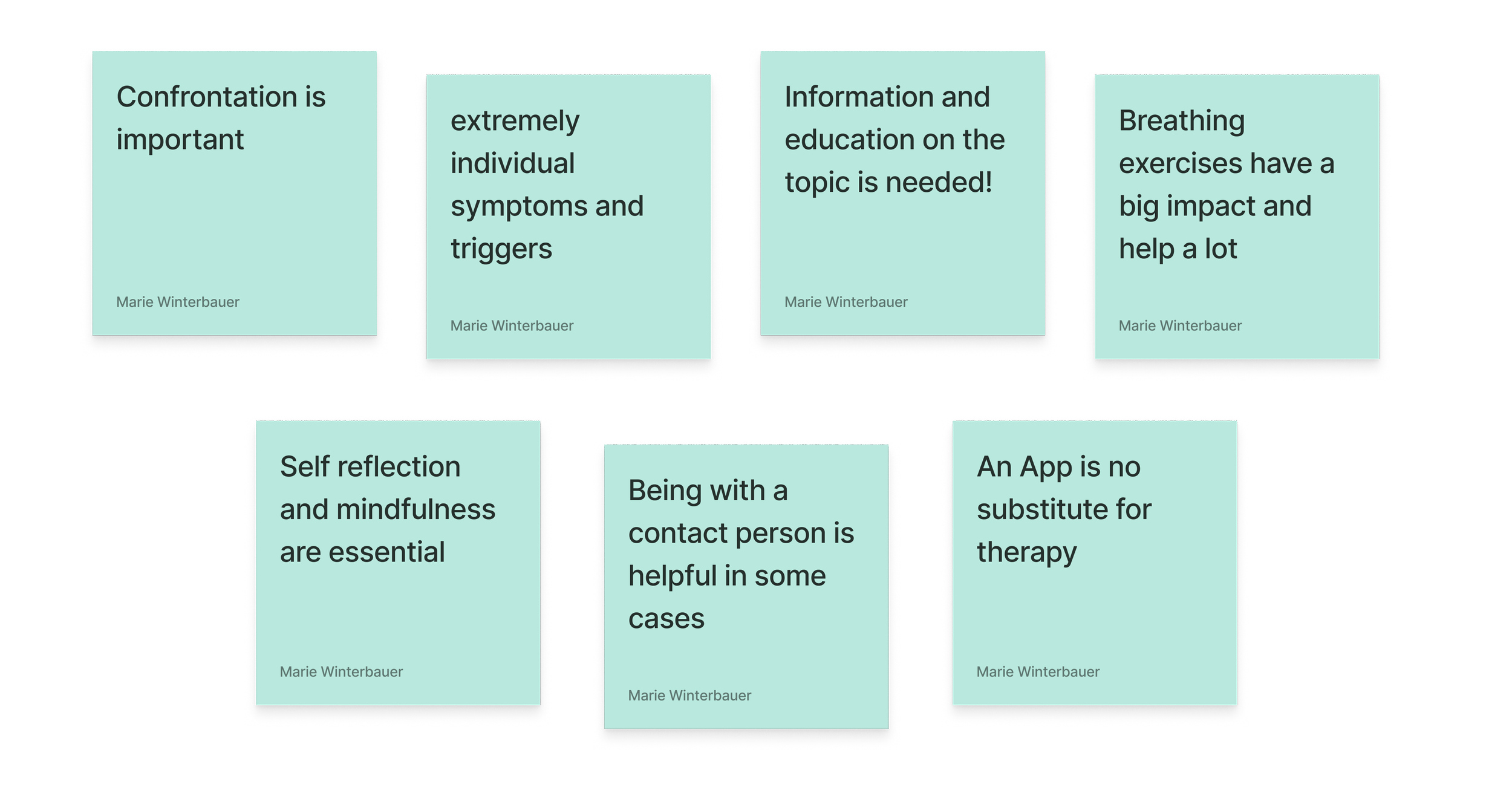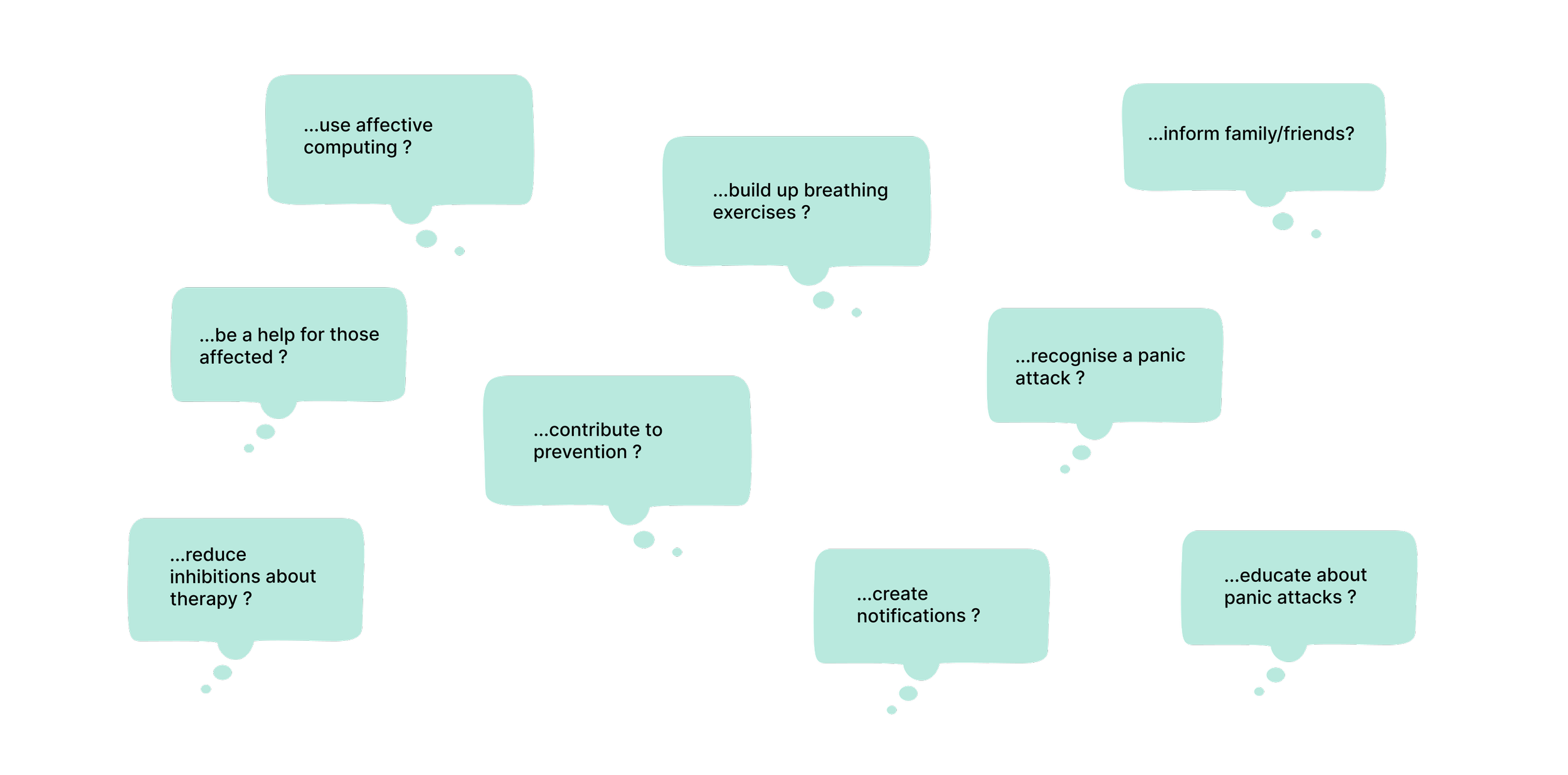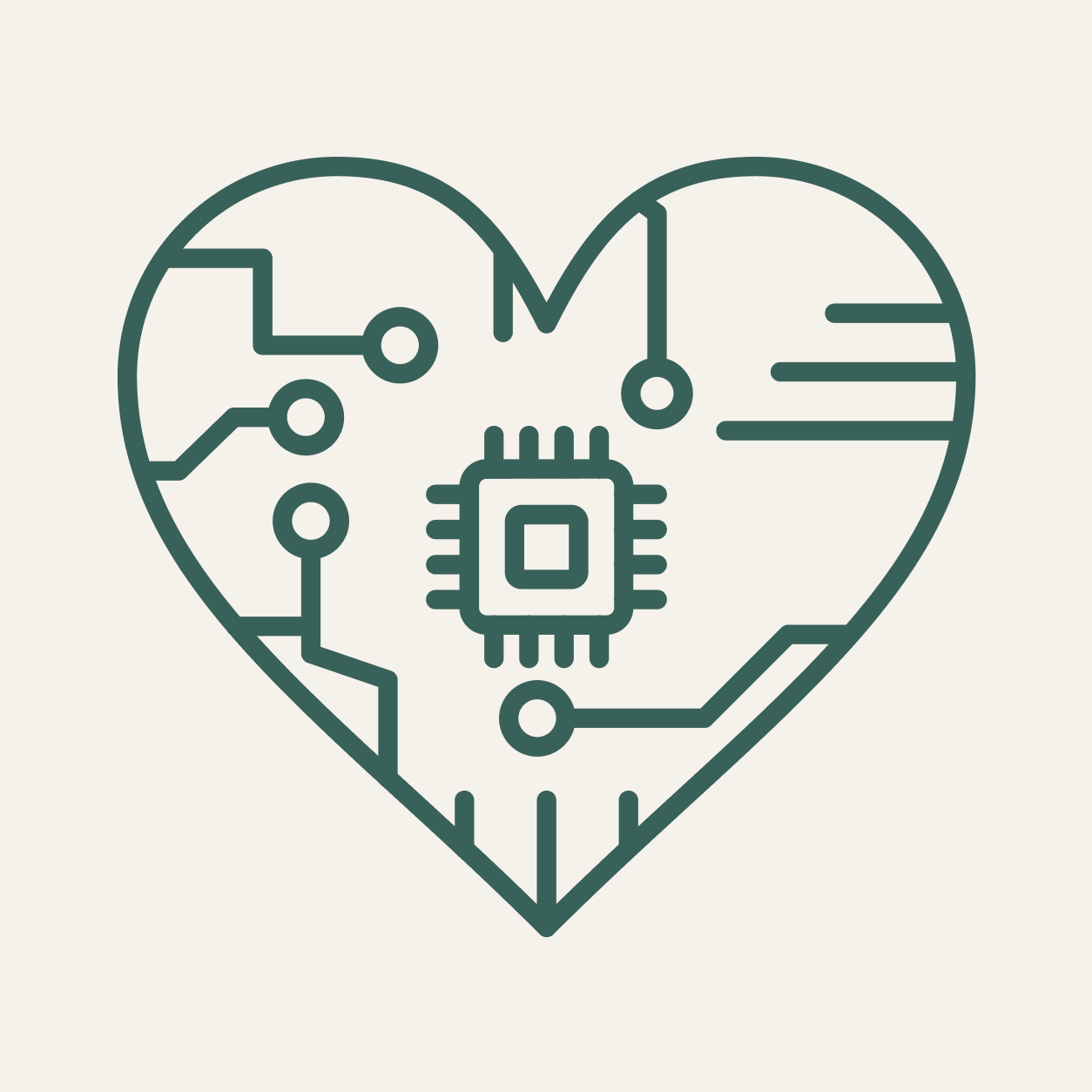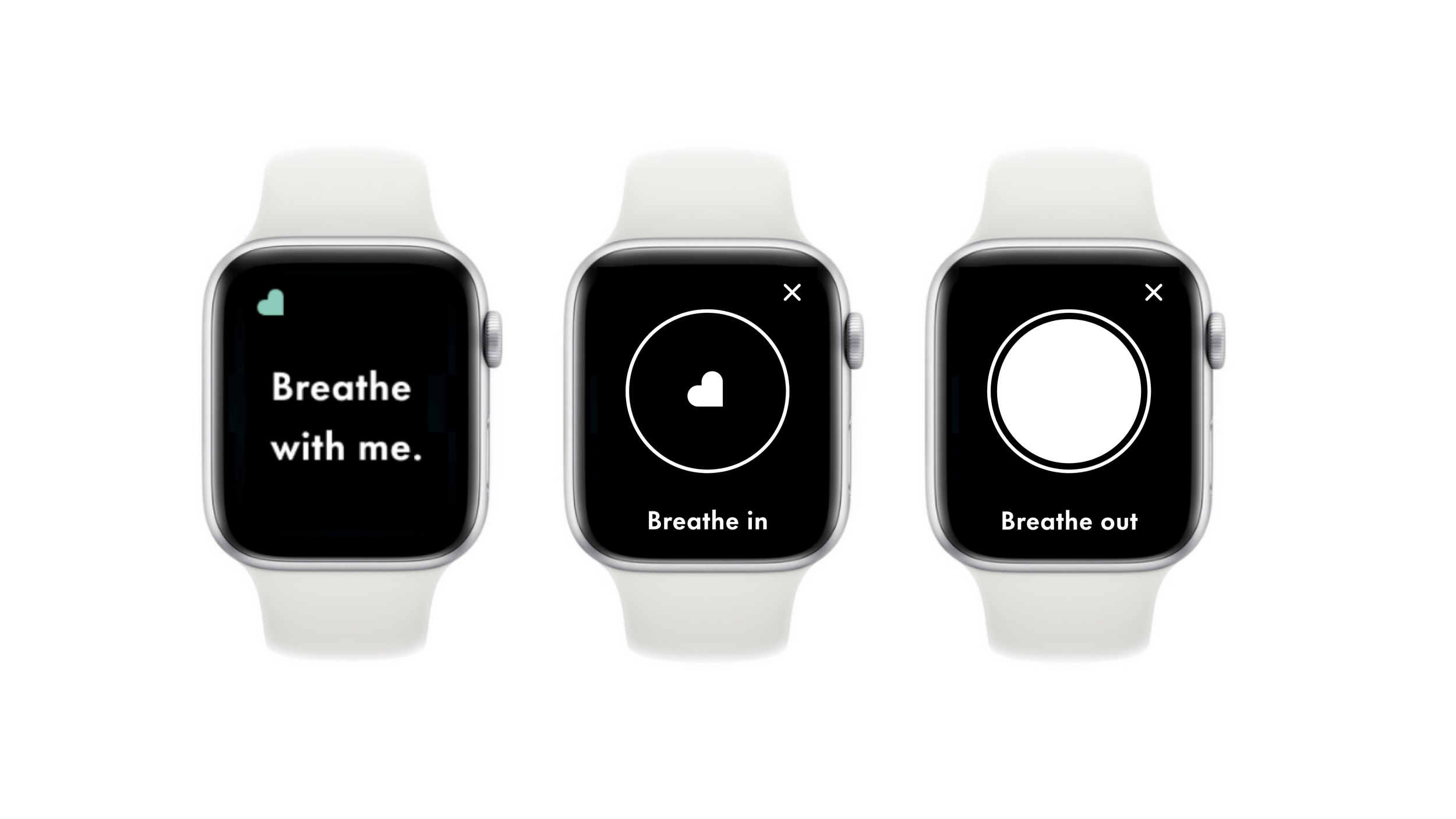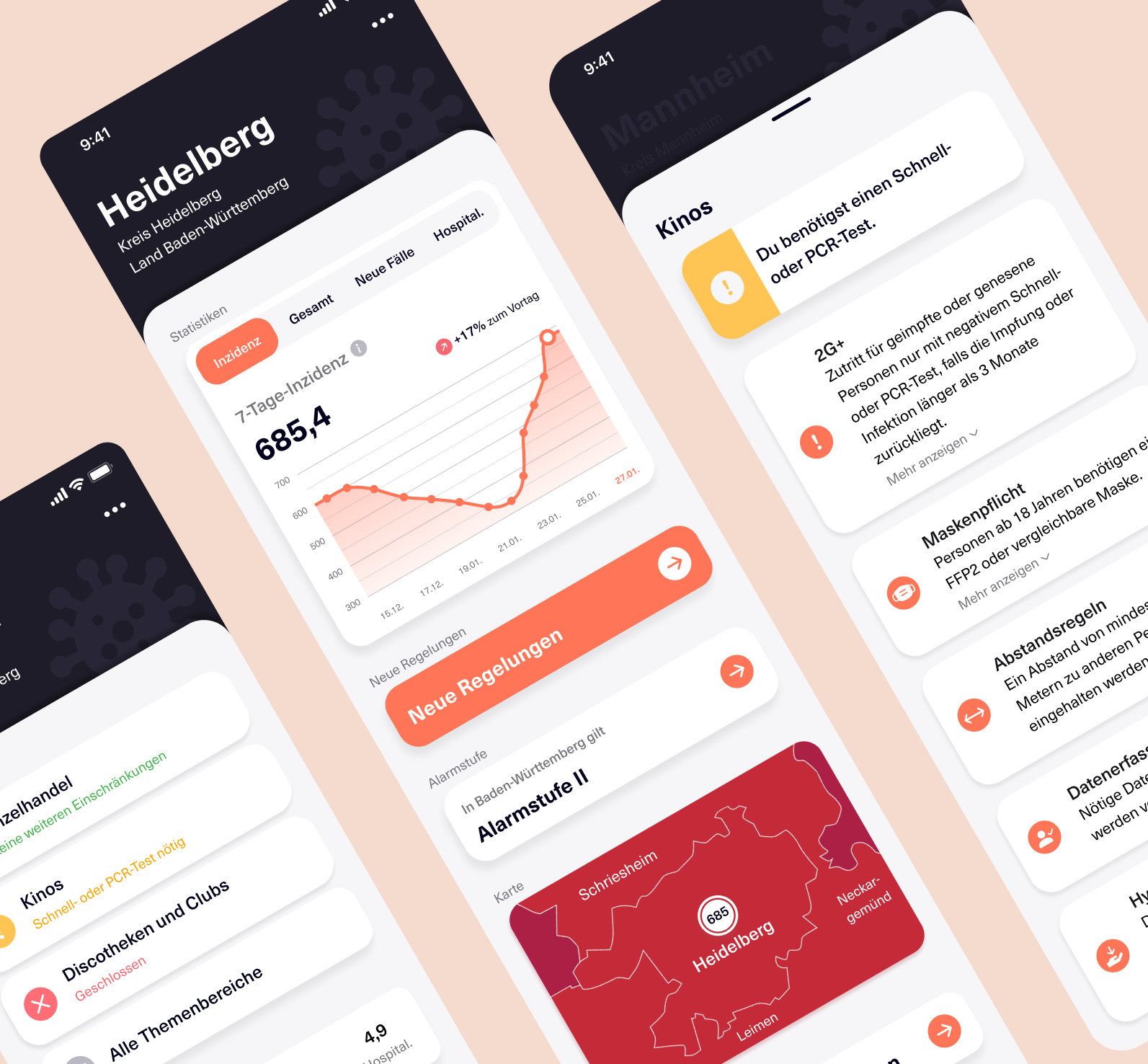
Cara - help with panic attacks
Cara is designed to help people suffering from panic attacks before, during, and after the anxiety attack. The application uses affective computing and detects the sufferer's emotional state by measuring heart rate and skin conductivity.
The concept of the application is not intended as a substitute but as a support to professional help.
Time frame:
2,5 months, 2021
Project Partners:
Sandy Kübler, Kevin Costa
Course:
Invention Design I, supervised by David Oswald and Maurice Rio @HfG Schwäbisch Gmünd
Over 10 Million people suffer form anxiety and panic attacks and every fifth person experiences a panic attack once in their lifetime.
Just in Germany.
Research
After our own internet research and benchmarking, we conducted a total of five qualitative interviews to gather different perspectives on the topic of panic attacks. Three of the interviewees were panic attack sufferers, each with their own individual triggers, symptoms, and frequency of attacks. We quickly learned how differently panic attacks can manifest themselves.
In addition, we interviewed two therapists to obtain professional opinions and experiences on the topic. One of the therapists was a Cognitive Behavioral psychologist who could tell us a lot about the approach during therapy such as confrontation and exercises. The second therapist specialized in depth psychology. It was interesting to learn how different the approaches of the psychologists were and how important it is to mediate therapy, as panic attacks are often a symptom and the cause can lie deeper, such as with childhood trauma, etc.
We also conducted a survey on the topic, which we addressed to the students of the HfG Schwäbisch Gmünd. We asked many open questions. When we evaluated the answers of the 71 participants. We recognized patterns and commonalities among the people concerned and strongly individual habits.
Key findings:
Guiding questions
It is especially important for us to learn from the findings how we can respond and help those affected. Technical aspects like recognizing panic attacks are also important to us. By asking these "How can we..." questions, we are able to further develop our concepts with deep understanding.
Personas
There are different triggers, ways of tackling panic attacks, ways of contacting friends, etc. That's why we invented two personas, typical users, and tried to adapt our concept to these different groups of people.
Concept
Before we started designing the screens in detail, we had to be clear about all the features and the structure the app needs. To get an overview we created a flowchart that depicts the user journey of an app user from downloading the app to finally using it. It was important to us that Cara was well thought out from start to finish, and that the steps in the application were executed in a logical order.
Affective Computing
Affective Computing, also known as Emotion Artificial Intelligence or Emotion AI, is a field of study within Cognitive Computing and Artificial Intelligence (AI) that deals with collecting data from faces, voices and body language to measure human emotions.
To measure their emotions, we decided to use a smartwatch that has the sensors we need. We assume that the smart watch trend will continue and in the future most people will own one.
Firstly, the EDA sensor is used to measure the skin conductivity of the people concerned. Sweating is one of the most common symptoms of anxiety and so can be measured well.
The second sensor is the heart rate sensor to analyse the heart rate, which increases significantly during a panic attack.
Sensor technology
Screen Design
After we decided on the functionality and content we started with Storyboards and Wireframes of the App for the Phone as well as the Smart watch. We defined a Styleguide for the Look & Feel and started working on the final Prototype. Here you can see some examples:
Why
Panic attacks are generally still a taboo topic and not often talked about. By learning so much more about this matter as well as talking to patients and psychologists, not only did these projects teach me about how complex designing applications for such a facilitated topic is. We are incredibly different and so are the symptoms of panic attacks.
It also made me more understanding and aware of the importance of talking about mental health, also in my private surroundings. This makes this one of my favorite projects.
The goal of the course Invention Design I is to use raising technology to solve relevant problems in our society.

